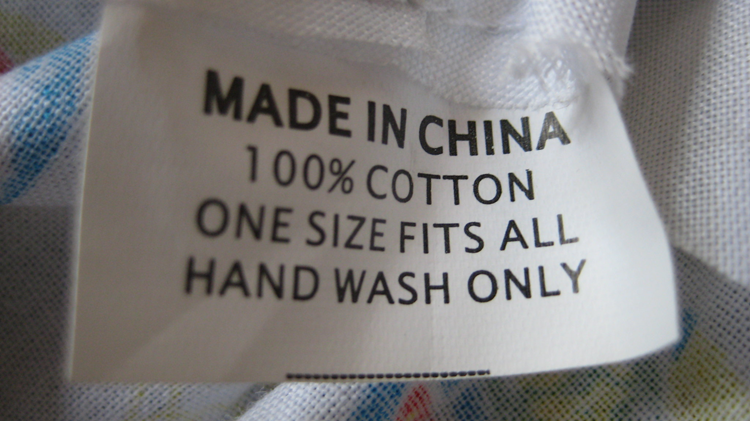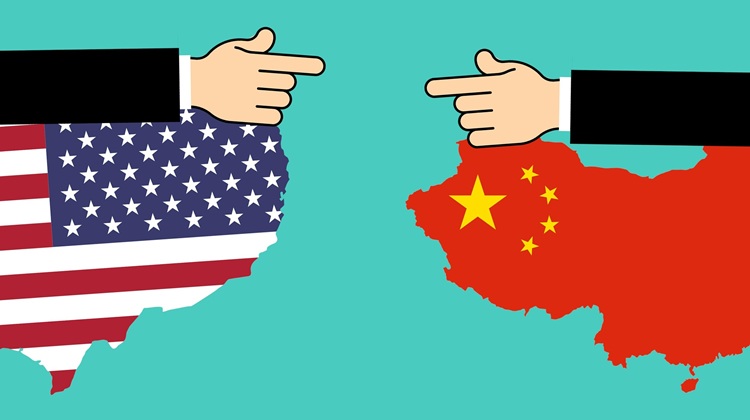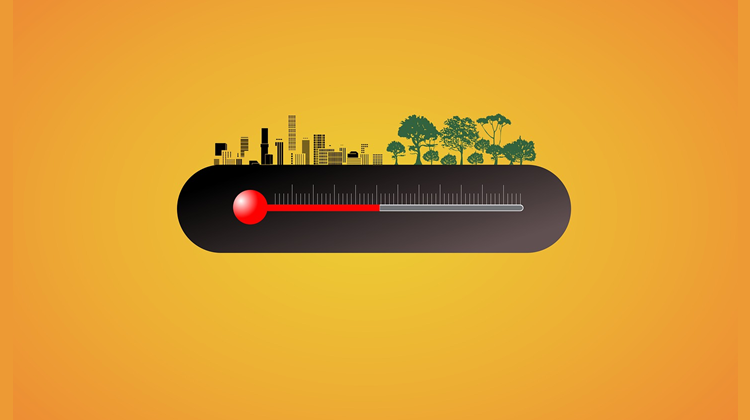Unleashing Kenya’s development potential

President Ruto’s administration must target strategic sectors to unlock the country’s development prospects.
Kenya’s August 2022 presidential elections were keenly contested by former deputy president William Ruto and long-standing opposition leader Raila Odinga. In a historic victory, the Supreme Court affirmed Ruto’s victory, and despite his narrow win, the transition occurred peacefully.
However, Ruto’s administration faces the difficult task of transforming the economy and achieving sustainable development in Kenya as the country is confronted with numerous developmental challenges.
According to Kenya’s medium-term plan III (2018-2022), there are several critical challenges facing the country. These include low manufacturing and export growth, persistent trade and balance of payments deficits, low levels of investment and high unemployment rates. They also include the high cost of doing business, high energy costs, the increasing cost of living and high food prices, among others.
The World Bank identified high levels of poverty and inequality, weak private sector investment, corruption, climate change and susceptibility to internal and external shocks as the key development challenges facing the country.
Like all other economies, the COVID-19 pandemic hit Kenya hard. In 2020, the economy shrank by 0.3% from the 5% growth rate it recorded in 2019. With declining revenue and increased government expenditure, total public debt grew from 59.5% of GDP in 2019 and is forecast to reach 72% by the end of 2022. This puts the country at risk of debt distress with rising debt servicing costs. The estimated fiscal deficit for 2021 was 8.2% with the current account deficit widening to 5.5% by the end of 2021.
Kenya Vision 2030 aims to achieve equitable, affordable and quality health care of the highest standards for all citizens
The African Futures and Innovation team at the Institute for Security Studies recently concluded an analysis and forecast on Kenya’s growth prospects. Kenya’s GDP per capita using purchasing power parity in 2019 was 52% (US$3 466) of the average of US$6 630 for its lower-middle-income peers in Africa. We project that it will reach US$6 249 on the Current Path (or business as usual forecast) by 2043, the end of the third 10-year implementation plan of Agenda 2063.
By this time, Kenya’s GDP per capita will be 42.5% lower than the projected average of US$8 902 compared to its lower-middle-income peer group, meaning that there is some prospect of reducing the gap, but only modestly. Using the World Bank benchmark of US$3.20 for extreme poverty for lower-middle-income countries, as of 2019, 32.2 million Kenyans, equivalent to 61.5% of the population, lived below this threshold. This number jumped by several million in 2020 as COVID-19 hit.
On the Current Path, the number of people in poverty in Kenya is expected to decline to 23.5 million, constituting 29.1% of the population, by 2043. Kenya is thus forecast to reduce extreme poverty, but slowly.
Turning the economy around and reducing poverty more rapidly requires strategic investment in those key sectors that will deliver the most development dividends. Kenya Vision 2030 is the country’s aspirational development plan to transform Kenya into an industrialising middle-income country providing a high-quality life to all its citizens by 2030.
To achieve this, there are three key sectors the government must focus on.
First is the area of governance and stability. While Kenya appears to be doing well regarding governance security and inclusion, its governance capacity is low and it lags in fighting corruption. Despite ranking 14th on the Ibrahim Index of African Governance, Kenya currently ranks 29th in Africa on the Transparency International Corruption Perceptions Index and 16th among the 23 lower-middle-income countries.
An improvement in health and lower fertility rates will accelerate Kenya’s demographic dividend
In 2019/2020 the Ethics and Anti-Corruption Commission received 2 221 graft-related cases for investigation, while 448 reports were forwarded to other public institutions for appropriate action to be taken. Thus, on the surface things seem to be moving, but the reality is limited accountability with only the small fish being prosecuted.
Greater stability and better governance ensure efficient allocation and distribution of state resources and encourage inflows of foreign direct investment, among others. We modelled an improved Governance and Stability scenario in Kenya that can raise Kenya’s GDP per capita in purchasing power parity from US$3 466 in 2019 to US$7 020 by 2043. This represents a 12% increase over the Current Path forecast for that year.
Likewise, the scenario can reduce the number of people living below the poverty line of US$3.20 by 4.5 million compared to the Current Path.
Achieving this will require significantly reducing corruption, improving democracy through increased accountability and adherence to the rule of law, increasing government effectiveness that enhances revenue collection, gender empowerment and more stability, among others.
Second is in the area of trade, particularly promoting intra-African trade through the full implementation of the African Continental Free Trade Area (AfCFTA) agreement. Trade increases the total factor productivity of firms through competition and increased knowledge transfers. One of Kenya Vision 2030’s goals is to achieve an export sector that constitutes 29% of GDP by 2022.
Kenya’s large youth bulge of 48% as of 2019 is higher than Africa’s average
Kenya was one of the first countries to ratify the AfCFTA agreement. It was also one of the eight countries chosen to participate in the pilot phase of the AfCFTA guided trade initiatives that enabled the country to export its locally made car batteries and tea to Ghana.
Kenya’s main exports include commodities such as tea, cut flowers, refined petroleum, gold and coffee. Although its economy is open to trade, its trade with other African countries is limited compared to Asia, the European Union and United States. While most of the country’s exports are destined for other African countries, particularly those in the East African Community, most of its imports come from Asia (China and India), accounting for 65.7% of its total import bill in 2021.
The full implementation of AfCFTA by 2043 through increased exports, improved productivity, increased trade and reduced tariffs can significantly reduce poverty and increase economic growth in Kenya. This will raise Kenya’s GDP per capita from US$3 466 to US$7 070 by 2043, representing an increase of US$753 (or 11.6%) compared with the projections on the Current Path in 2043. It will also reduce the number of poor people in Kenya by about four million compared to the Current Path for that year.
Another area where Ruto’s administration needs to pay critical attention is health and demographics. Kenya Vision 2030 aims to achieve equitable, affordable and quality health care of the highest standards for all citizens. However, challenges such as corruption, shortages of essential medical equipment and medication, and health worker strikes detract from healthcare delivery.
While Kenya has made progress in improving health outcomes, it isn’t enough to help it meet key the Sustainable Development Goal targets on health and achieve a demographic dividend. In some instances, it lags behind its income peers on the continent. For instance, its infant mortality rate of 35.5 deaths per 1 000 live births in 2019 is 40% lower than the average of 43.4 deaths for lower-middle-income countries in Africa.
Furthermore, the large youth bulge (people aged 15 to 29 years as a percentage of the adult population) of 48% as of 2019 is higher than Africa’s average, and poses challenges to Kenya’s development. Coupled with large youth unemployment, it can be a catalyst for potential instability.
An improvement in health and lower fertility rates will accelerate Kenya’s demographic dividend and can significantly increase GDP per capita and reduce poverty, since it allows more revenue to be spent on human capital formation. This translates into more rapid economic growth. In the Demographic and Health scenario, Kenya’s GDP per capita is projected to increase to US$6 713 by 2043, which is US$426 (or 7.4%) above the Current Path forecast in the same year.
The number of Kenyans living in extreme poverty is projected to be 4.7 million lower compared to the Current Path. Achieving this will entail interventions that will reduce communicable and non-communicable diseases, mortality disease burden for children under five, the maternal mortality ratio and better access to modern contraception, safe water and improved sanitation.
Clearly, Kenya faces significant development challenges. Corruption, rapid population growth, an infrastructure deficit, human capital bottlenecks and rising public debts are some of the key factors impeding its developmental progress. However, rigorous and targeted socio-economic policy interventions to improve governance and stability, participation in free trade and better health outcomes, and advancing Kenya’s demographic dividend can unlock more rapid economic growth and reduce extreme poverty.
Image: Mustafa Omar/Unsplash







